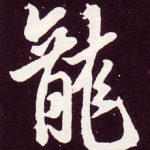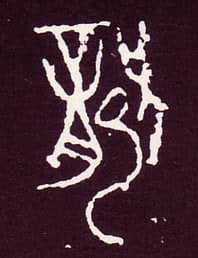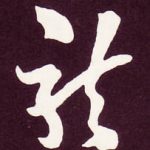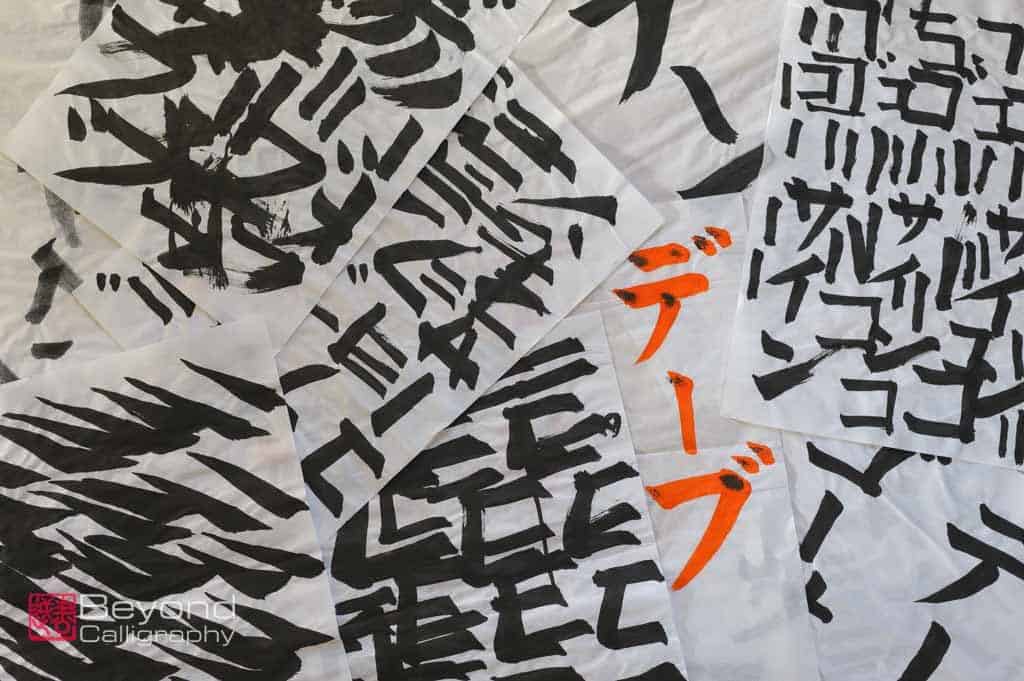We have been publishing Beyond-Calligraphy for some time now, and we have made many good friends and received many interesting requests. Some requests are easy, others are interesting, and then there are some that just keep don’t make sense to the team.

This one is asked frequently. “Can you please translate my name from English to Japanese?” We always reply with the same answer which is “yes” we can (don’t worry, we are not running for office), but can you please give more details about what you want. Their response for the most part is that I want a calligrapher to write my name in Japanese.
At this point we realize that the client hasn’t put any thought into their question. So we have to go back and forth trying to understand what the client is asking us to do. So why don’t we assume what they are asking for is to have their name translated into Kanji? Because we want our client to be happy, plus Kanji is not always the correct solution as you will see. (“assume”= to make an ‘ass’ out of ‘u’ and ‘me’).
So let’s try and help people to ask the correct question from the start.

The Japanese writing system is made up of three systems unlike the English alphabet which is, by comparison, rather simple. The Japanese characters everyone sees are part of the modern Kanji system, which, for the most part, are borrowed Chinese characters called Hanzi. It should be noted that not all characters were borrowed from the Chinese. Some were created specifically for Japanese according to need. i (If you do a search for Kokuji 国字 or Wasei Kanji 和製漢字 (和字), you will find them.) The other two systems are really syllabic scripts which are Hiragana and Katakana.
Let’s start with the easy stuff, Hiragana and Katakana. The modern Hiragana and Katakana scripts are both kana systems and each is made up of 46 characters. The reason I use the word modern is because some characters were removed from the historical Japanese System, thus they are no longer in use. You will find Hiragana is used mostly for native words where there are no kanji, including grammatical particles and for verb and adjective inflections. You will also see it used for the pronunciation of kanji characters as a reading aid, known as “furigana”. Katakana is found mostly in words which are taken from foreign language words. You will see it used mostly in names of people, plants, animals, minerals and some Japanese companies. Eg. (Uniqlo – ユニクロ,Toyota-トヨタ)

The modern Japanese Kanji table most people use and see (Jōyō or Jooyoo kanji) consists of about 2,136 characters, whereas the historical Japanese Kanji table is said to have about 5,000 to 10,000 characters. Yes, that’s a lot of characters to remember, but it gets more complex. Over the years these characters have evolved many times and most do not look anything like the original shapes.
There are five distinguished core styles in Calligraphy, and they are as follows: Seal (tensho), Clerical (reisho), Cursive (sousho), Standard (kaisho) and semi-cursive (gyousho) scripts. Some of these styles even have sub-styles. This can make things really fun for calligraphers when they write because it gives them the freedom to play and create lovely works of art. Say your name happened to be “Ryu” which could mean dragon in Japanese. A calligrapher would have at least five different ways to write the Kanji for dragon, and they would all be interesting as you can see below. One of the more interesting styles is oracle bone script as you can see the kanji kind of looks like a dragon.

So you see how much fun you can have when converting one Kanji in a Japanese name. Let’s go thru the process of converting an English name into Japanese Kanji. So let’s take my name “Dave” and try to convert it to Japanese.
Dave would be pronounced like de-bu in Japanese. Don’t forget to add the (-) long sound or it would be debu which means fat.
Now, all foreign names would be converted to Katakana so it would look like デーブ, or you might see デイブ also.

If you wanted your name in Hiragana as you did not like the hard lines of Katakana you would write my name like thisでーぶ or でいぶ.
As for the Kanji we will just stick to the standard script, and we will show you how most companies would translate Dave into Japanese.
De-bu is how you pronounce Dave, so they will break down the word into parts. They will find Kanji which match those parts and call it English to Japanese translation.
For “de” you could use the following kanji
“出” which means exit
“弟” younger brother
Since there is no – (hyphen to signify a long sound) in Kanji you would have to use “I”. I have only chosen two possibilities out of the 100 or so we could use.
“衣” clothing
“胃” stomach
Let’s move on to “bu”
“步” walk
“武” military
“分” minute
“無” nothing
And the list goes on for another 20 or so kanji. So let’s just take the ones we have at the moment and play around with them.
“出衣武” = exit, clothing, military
Looks cool right! How about we try another combination
“弟胃無” = younger brother, stomach, nothing.
As you see there are many different combinations of Kanji which could be used to translate the name “Dave” into Japanese, but none really mean Dave or describe my personality.
This way might work, and that is to use the pronounciation for your name (breaking it down into parts) in a relatively simple book of Kanji characters with a roman alphabet index. One such book is by Kenneth G. Henshall and called “A Guide to Remembering Japanese Characters” published by Tuttle Language Library.
Here is how one person approached having her name written in Kanji. Rona Conti who is a team member needed to have seals made for her calligraphy work. The standard way to do this would have been to use katakana since she is not Japanese. But she wanted her name in Kanji like her fellow students and because she finds Kanji to be mysteriously fascinating. Using the Henshall book, in consultation and with the approval of her Sensei/teacher, her name is 魂 手 露奈. The pronounciation would be “kon” “te” (there is no “ti” in Japanese”) “ro” “na” with family name first and given name second. Kon means soul or spirit and te means hand which to her together represents the calligraphy she had begun to study. Ro means the country Russia which represents her maternal roots and na comes in part from Nara which represents her spiritual roots or Japan, her adopted homeland.

Now, if I was going to get my name translated into Japanese or Kanji there are a few ways I might do it. One way would be, look for the meaning of your name and use that to translate into Japanese. The reason we say this is because it’s easier to translate a meaning than a direct word. Dave is the short form for David and its origin is from Hebrew. The meaning of it is “Darling” or “Beloved”. Well “Darling” in Japanese would read ダーリン so that wouldn’t be cool, but if we use “Beloved”, it would read like this 最愛 in kanji.
Another way to translate your name into Japanese would be to find some keywords that best describe your personality. To do that ask your family and friends to give you 5 words which best describe your personality and then you choose one or two kanji from those words.
Now if the above examples are not what you are looking for, and your name happens to be written in the bible, you can always check the Chinese translation of the bible to find your Hanzi. David would look like大衛 (da wei) in traditional Hanzi.

So what have we learnt from the above? Asking a calligrapher to translate your name from English to Japanese is like walking up to Pablo Picasso and saying HEY you speak Spanish and you’re an artist, can you translate my name from English to Spanish and make it look cool. I do hope you are laughing at that, but that is exactly what you are asking. Translation from English to Japanese or any language is a specialized profession just like any Calligraphy style be it Shodo, Arabic, Western, etc. is a specialized form of writing. So next time when you see a Calligrapher or a Calligraphy company saying they can translate your name from English to Japanese or any language, ask yourself are you really getting the best solution for your money.
If you are a calligrapher and disagree with this, share your thoughts below as we would like to hear what you think.
